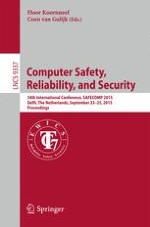
2015 | OriginalPaper | Buchkapitel
Medical Devices, Electronic Health Records and Assuring Patient Safety: Future Challenges?
verfasst von : Cor J. Kalkman
Erschienen in: Computer Safety, Reliability, and Security
Aktivieren Sie unsere intelligente Suche, um passende Fachinhalte oder Patente zu finden.
Wählen Sie Textabschnitte aus um mit Künstlicher Intelligenz passenden Patente zu finden. powered by
Markieren Sie Textabschnitte, um KI-gestützt weitere passende Inhalte zu finden. powered by